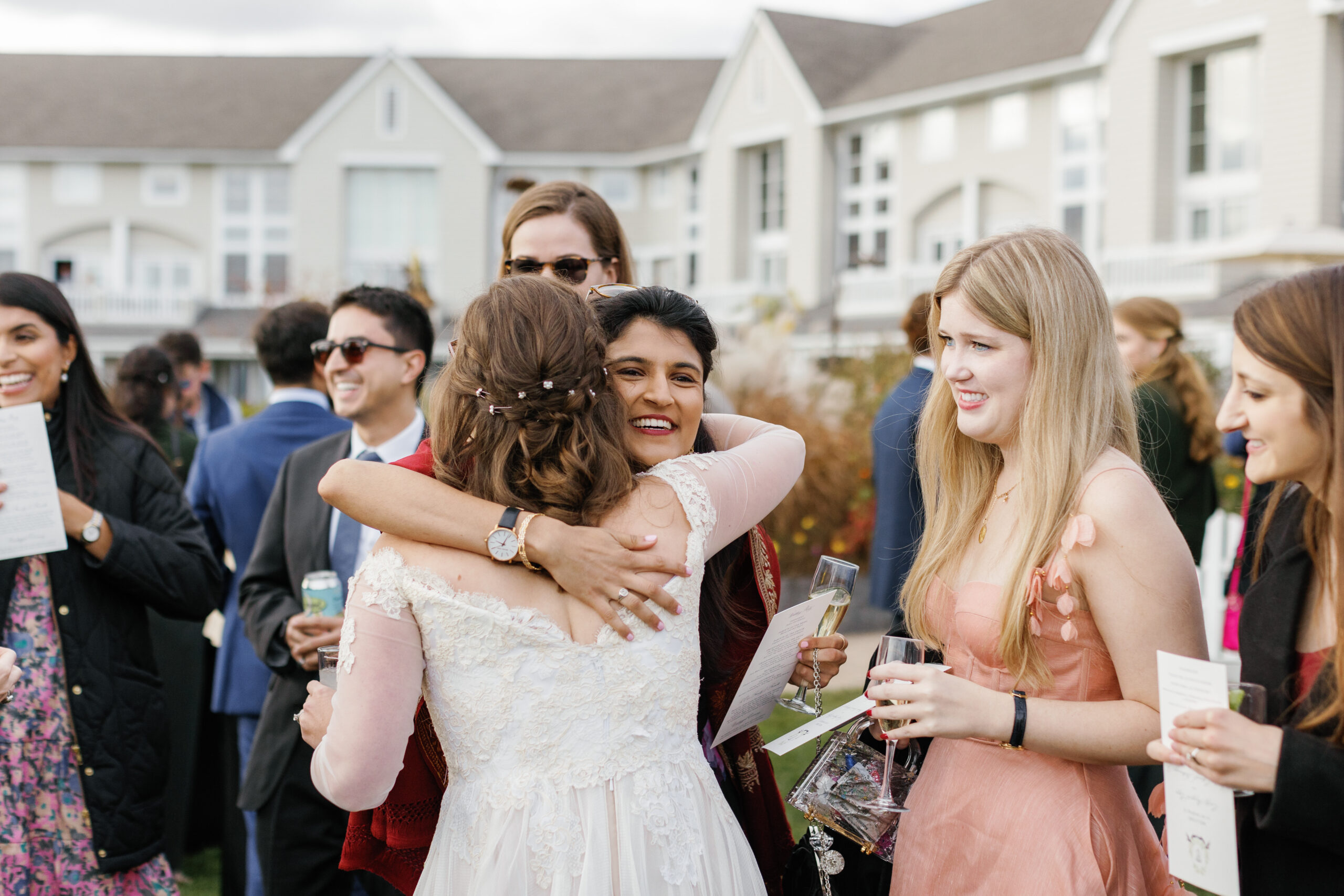
Browse by Category
I am so excited to get to know you more. I bring my whole self to this work, which includes my fight for equity and justice. I am not a photographer who separates my beliefs and passions from photographing humans because I don’t believe they’re separate. I can't ask you to be vulnerable if I'm not willing to do the same.
kendra
I'm
How to Create a Wedding Timeline that Maximizes Your Experience
June 7, 2024
If you are wondering how to create a wedding timeline to maximize your experience, you’re in the right place! Crafting the perfect wedding timeline can really feel like orchestrating a symphony at times; extremely difficult if you’ve never done it before.
However, as a wedding photographer in Boston with years of experience, I’m here to share my best tips for a successful wedding timeline that doesn’t feel rushed so that you can really be present throughout the day.
Throughout this blog post, I’ll guide you through the essentials of creating a wedding timeline that balances logistical needs with emotional moments, allowing you to really enjoy every moment without feeling overwhelmed.
How to Create a Successful Wedding Timeline
Utilize Time to Your Advantage
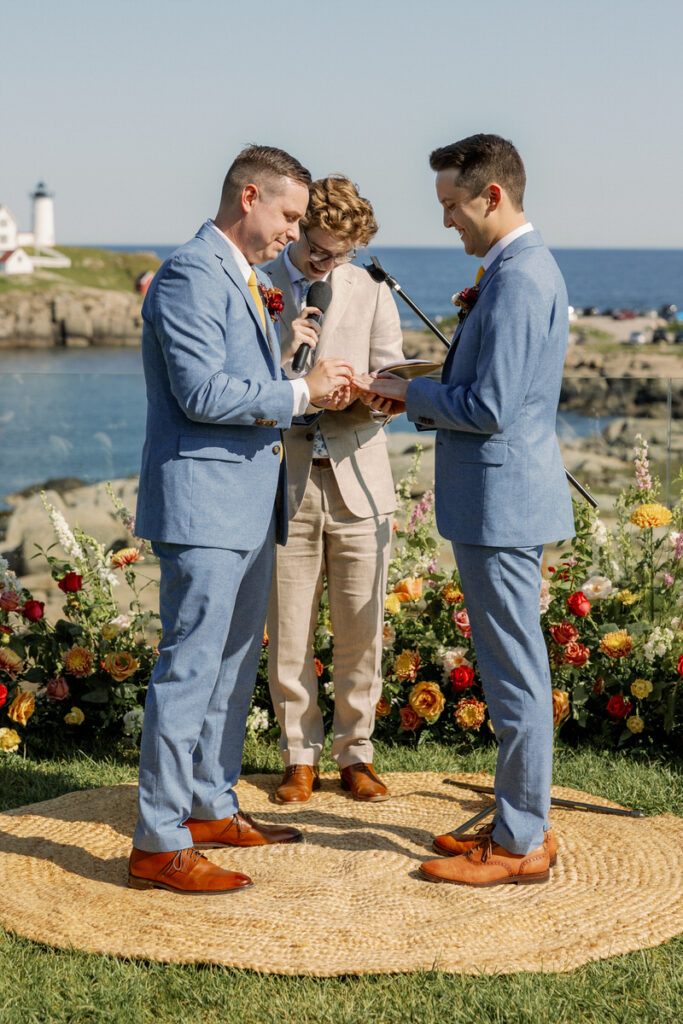


First things first, and I really want you to listen to what I’m saying here: utilize time to your advantage. This is truly my #1 tip when it comes to how to create a wedding timeline. Throughout this entire post, almost every single tip is going to revolve around the idea of time. If you don’t use your timing wisely, you will easily feel rushed and like you aren’t enjoying your day.
Always Add Buffers
My first tip about time is to always add buffers. When crafting a wedding timeline that flows seamlessly from one part of the day to the next, incorporating 10-15 minute buffers, particularly for group photos, works wonders.
This seemingly simple (yet efficient) tip can really enhance your and your partner’s wedding day experience while also ensuring that unforeseen circumstances won’t derail your schedule.
Group photo sessions, while essential, are notorious for running over the allotted time. Not only do you have to gather everyone in one location and coordinate poses (which can be even harder with little ones), but you also have to manage any unexpected interruptions.
By adding in a 10-15minute buffer before and after your group photos, you create a safety net that absorbs those potential interruptions and delays. Whenever we plan your timeline together, I’m already factoring in the extra time to ensure that things are on time and relaxed
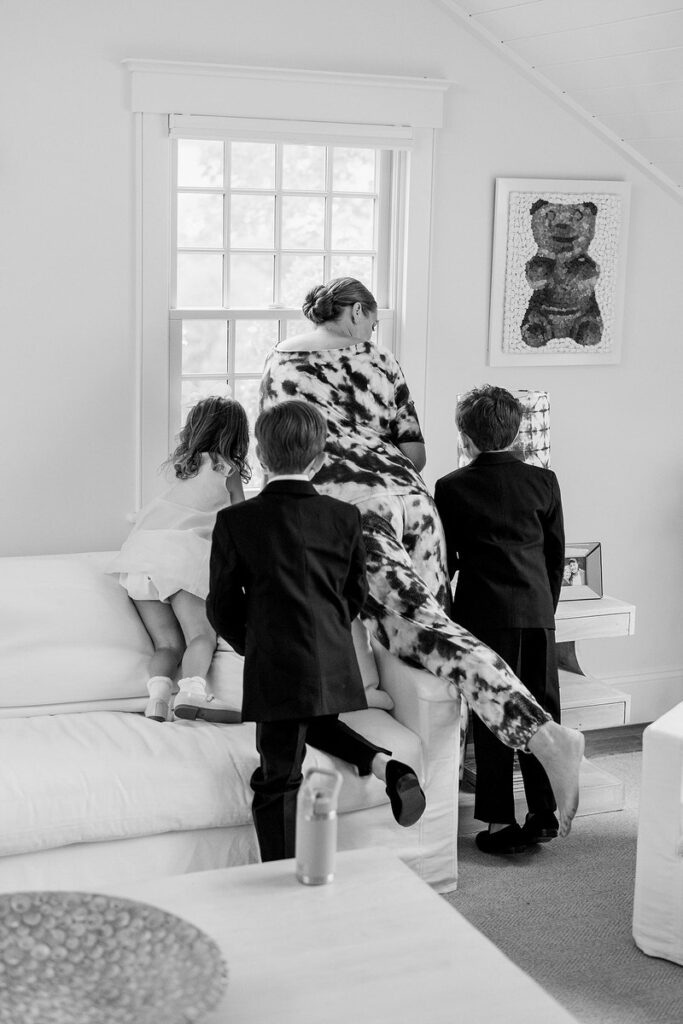
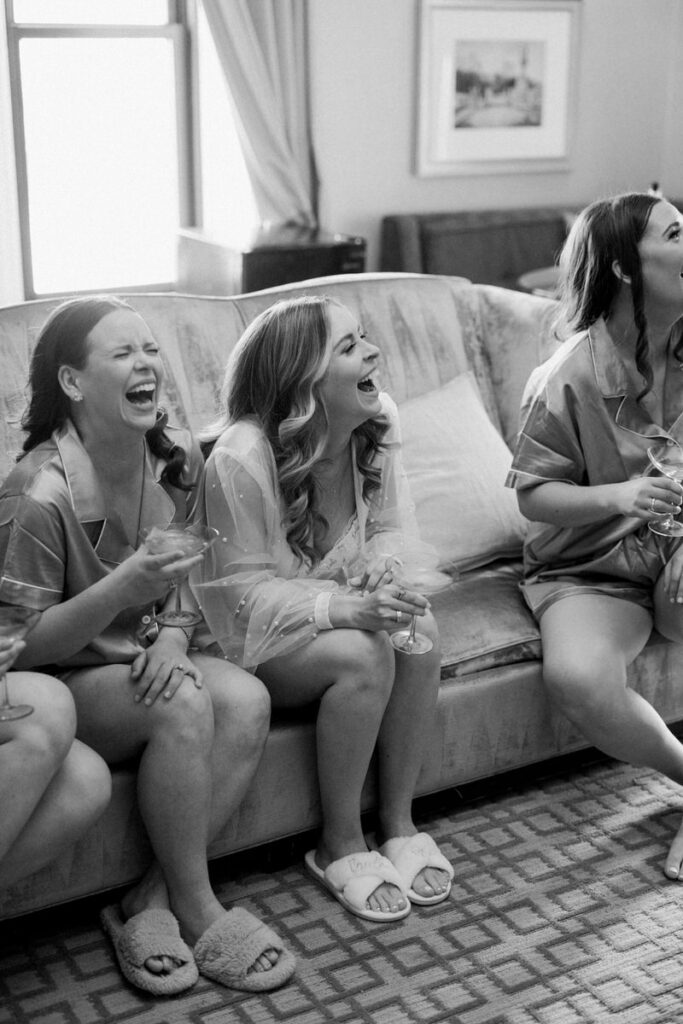

Ensure Hair and Makeup Finish Early
Next, make sure that hair and makeup finish early so you have time to chill. This can make sure that you have a positive and calm time that will really set the tone for the rest of the day.
Getting ready, though exciting, can unexpectedly become one of the more stressful and time-consuming parts of the day if it’s not carefully managed. If hair and makeup run late, it truly will create a domino effect that can impact everything, starting with pre-ceremony photos.
Giving yourself more than enough time for hair and makeup and aiming to finish early can allow you time for any unexpected issues or last-minute touch-ups and give you a second to breathe before the rest of the day continues so that you can prepare for the celebration ahead. In fact, I always tell couples to have a hard stop 30 minutes before the extra time we build in for relaxing. Additionally, it is crucial that in addition to the bride, anyone helping them get ready must also finish hair and make up early.
Leverage Vendor Expertise
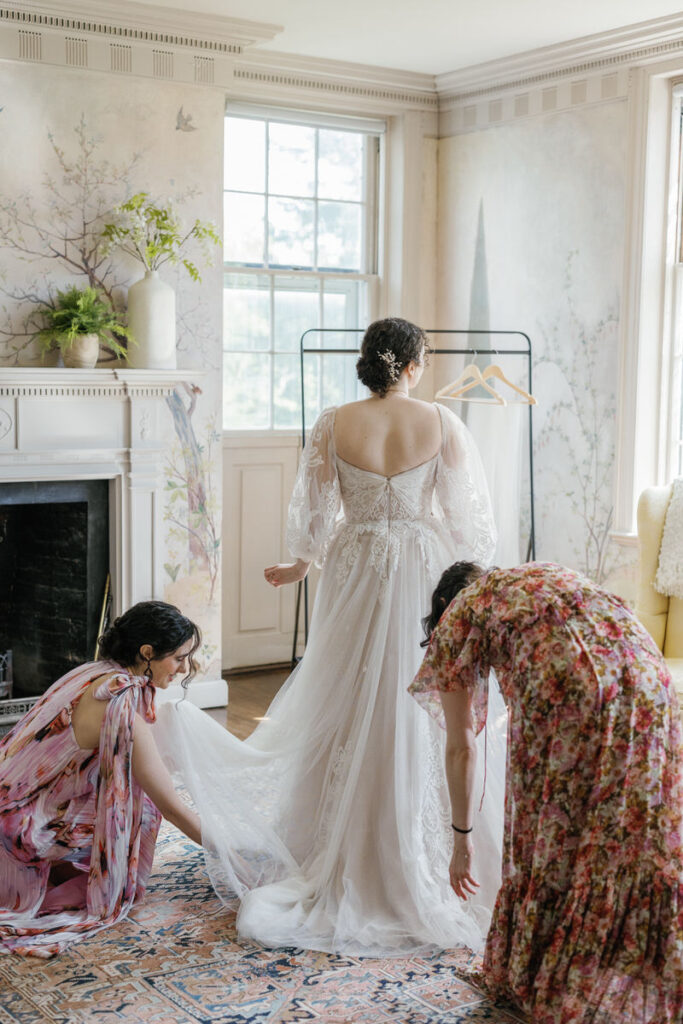
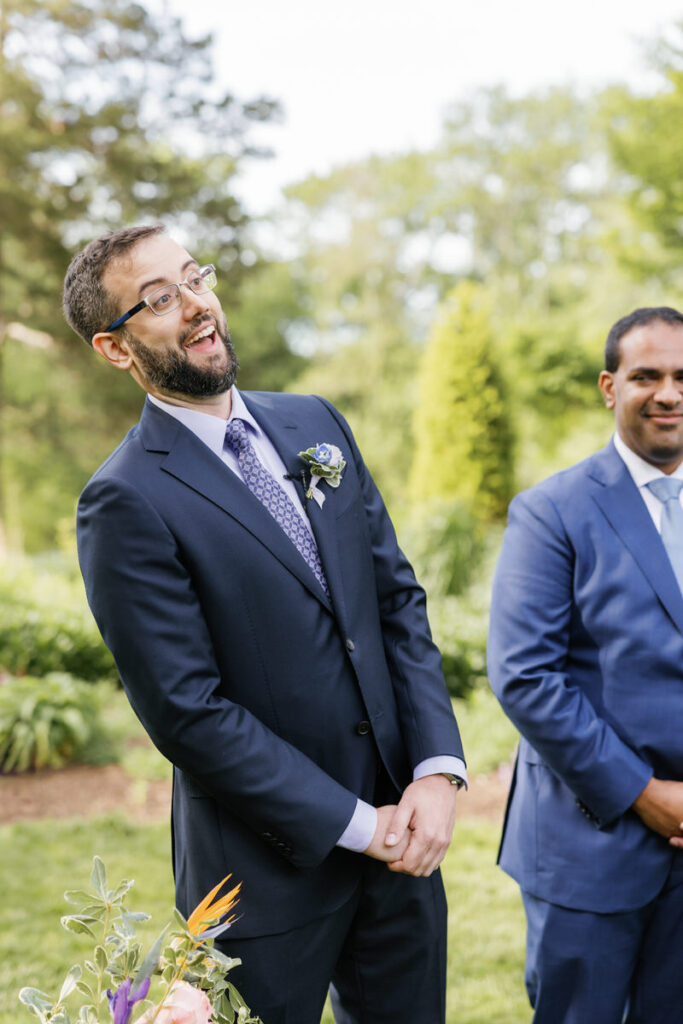

You can also tap into the expertise of your vendors regarding crafting your wedding timeline. Wedding professionals, from planners and photographers to caterers and even DJs, can really bring a wealth of knowledge to the table, having been part of countless weddings themselves.
Professionals like this understand the nuances of timing and flow that can really make or break your wedding events. Consulting with them during the planning phase allows you to benefit from their insights on how much time their segment, in particular, might require and how to best sequence your activities for maximum efficiency.
Vendors can also help to identify potential pitfalls in your proposed timeline and offer solutions to help you avoid them. They can really anticipate elements you might not have even considered, like the time required for setting up and breaking down equipment or even the best moments to transition from dinner to dancing.
Prioritize Your Key Moments

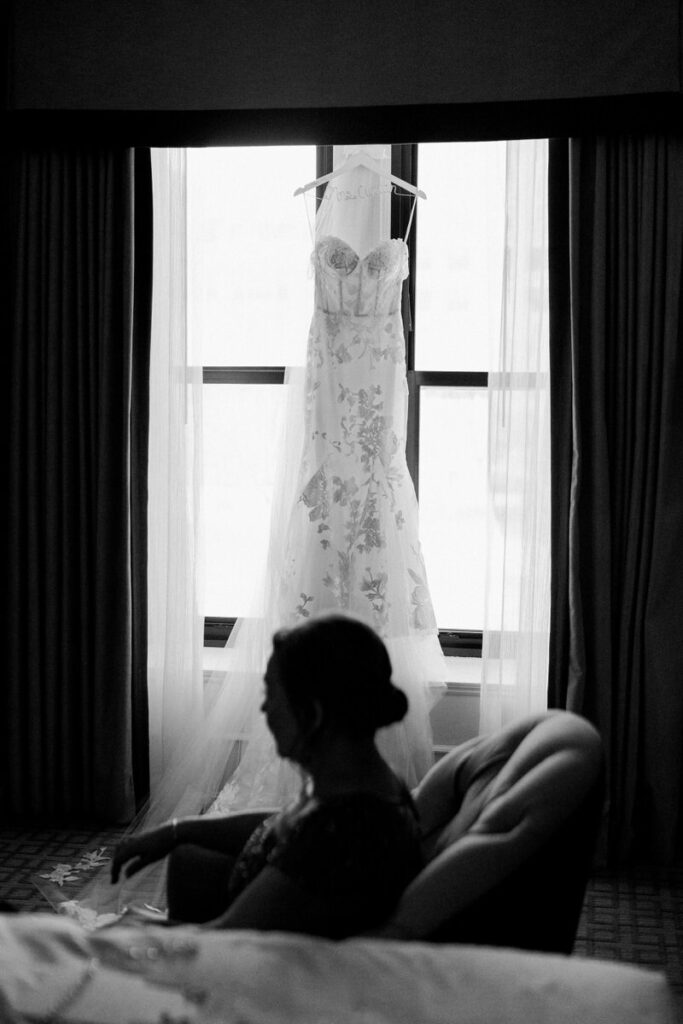
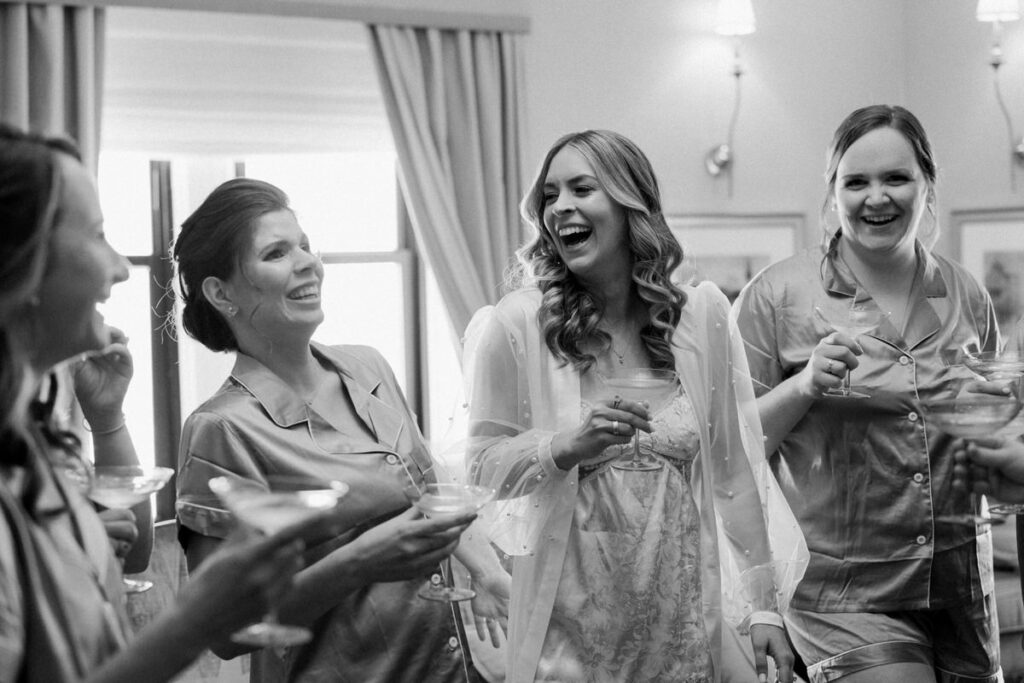
Prioritizing key moments is also essential, as every couple is going to have different aspects of their wedding that hold special significance. You and your partner can discuss whether that may be the exchange of vows, having a first look, cocktail hour, the first dance, or even a unique tradition just for the two of you.
Identifying these key moments between you both earlier in the planning process can make sure that they are featured prominently in your timeline, and you can sprinkle the rest of your events around them. This doesn’t just guarantee that you have sufficient time to enjoy these key moments without feeling rushed, but can also help to communicate to your vendors what parts of the day require more attention.
Consider Travel Time
Be sure to also consider travel time! When ceremonies and receptions are held at different locations, travel can impact the flow of the day, potentially leading to delays and making guests (and you) feel rushed. Thoughtfully accounting for the time needed to move between venues, including potential traffic or logistical challenges, you give yourself and your guests the breathing room necessary to move from one part of the day to the next.
Doing this will allow you to live in the moment more, so that your photographer can get those candid moments and interactions on camera.
Opting for a single location for the ceremony and reception will give you more time for these candids and could potentially help you not feel as rushed. This can also encourage more spontaneous interactions and photo opportunities throughout the day.
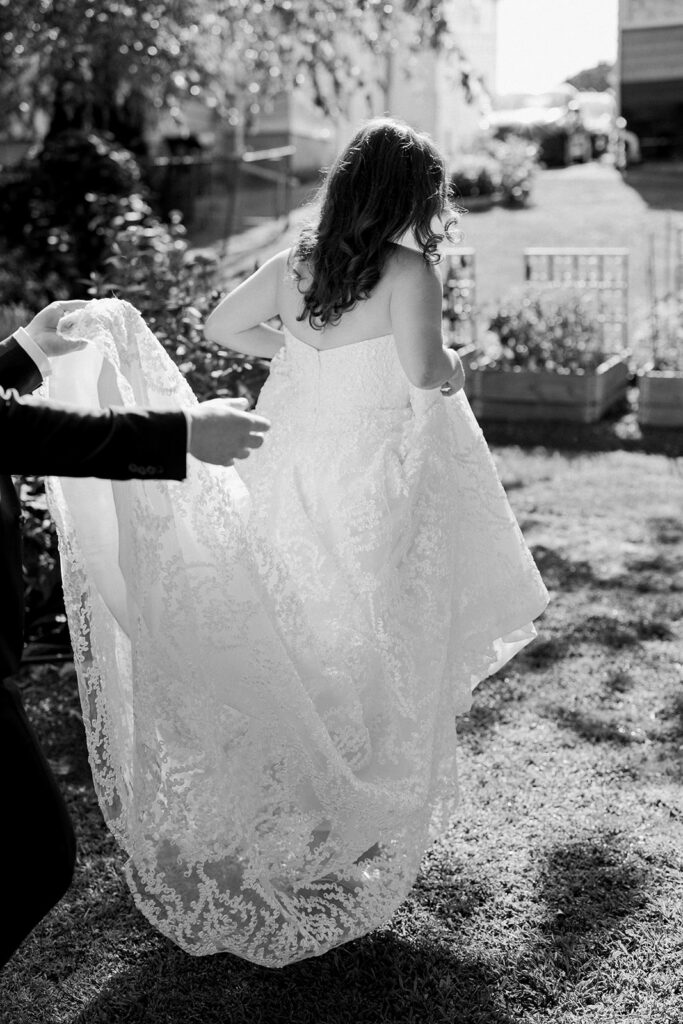

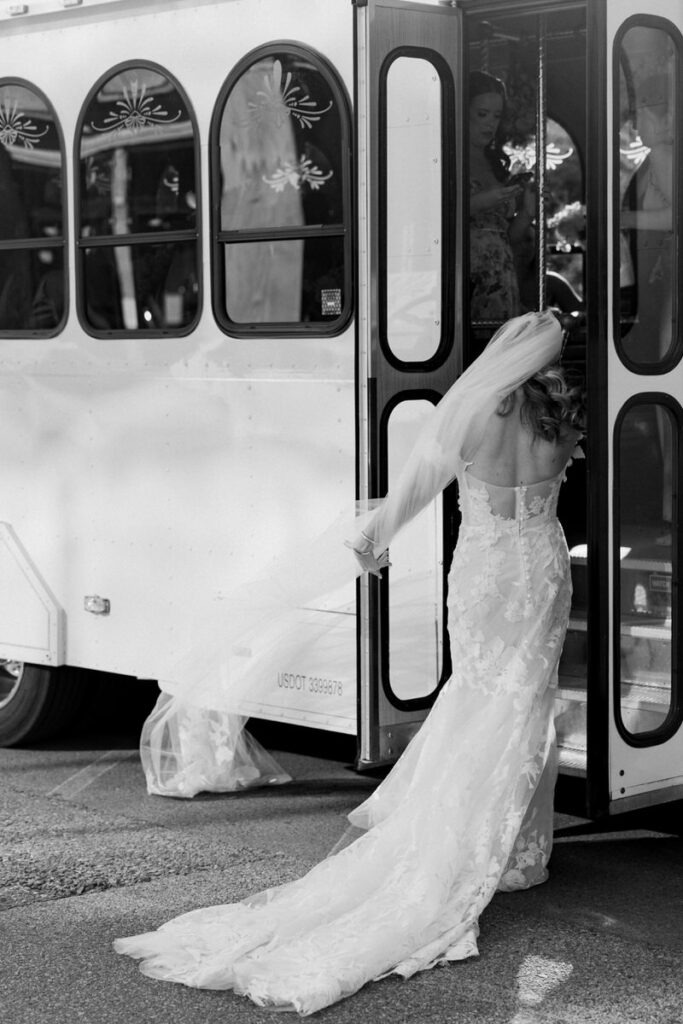
Incorporate Breaks
I know I briefly mentioned adding buffers when needed earlier, but it’s also important to incorporate breaks. You will need a second away from everyone throughout the day, and so will your partner! Without scheduled pauses, the day can quickly become overwhelming.
Consider adding a few pre-scheduled breaks for you both throughout the day, whether it’s to take a seat, eat some snacks, or just catch your breath alone together. This is one of the more overlooked aspects of creating a wedding timeline.
Opt for a Cocktail Hour
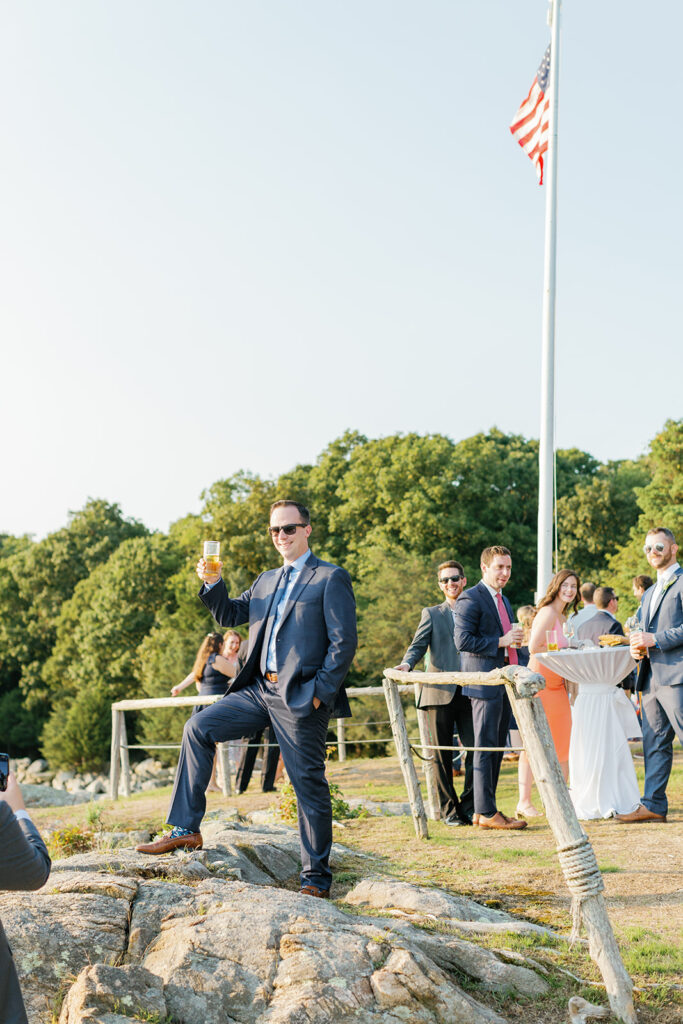
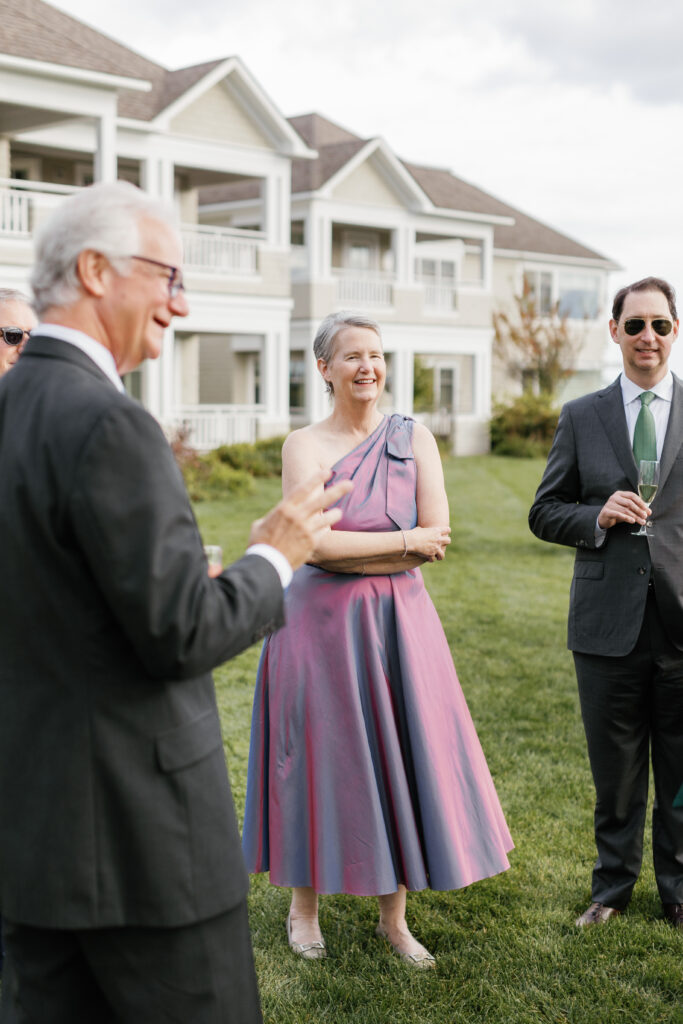
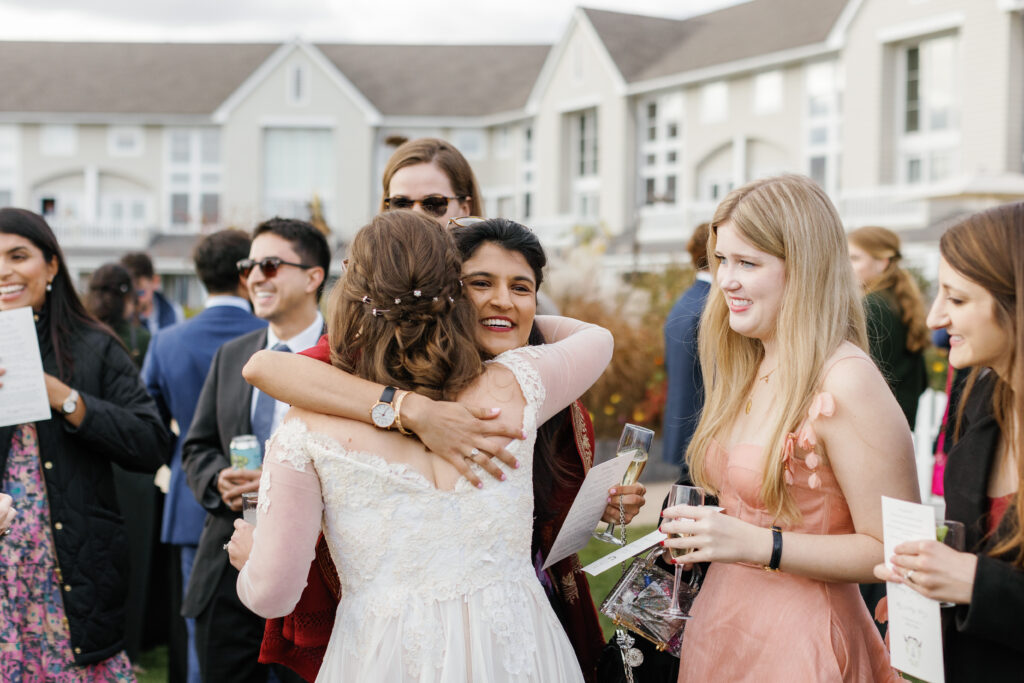
A cocktail hour can serve as a break for your guests. It’s another way to press pause, allowing guests to mingle, enjoy appetizers, and sip on drinks while you take post-ceremony photographs.
This also serves as a great way to transition directly into the reception, ensuring that the energy and excitement from the cocktail hour carry over into the dinner and dancing (aka the fun parts) of the evening.
Plan Group Photos Efficiently
Family and group portraits often consume the most time on a wedding day if not done right. Ahead of your wedding, I send you a detailed questionnaire where you are able to check off the photo combinations you want. As quick as it seems it will be, group photos always take longer than you expect, and the reality is that the more time you spend posing for photos, the less time you have to spend being present with your people.
Think carefully about what photos you really need. One great rule of thumb is that if you wouldn’t print it, you likely don’t need to orchestrate it. To maximize your time even further, be sure to communicate with your family and friends to let them know when and where they will be needed for photos ahead of time to make sure everyone is ready at the right time. Be sure to reiterate these details again on the day of, as weddings can be hectic.
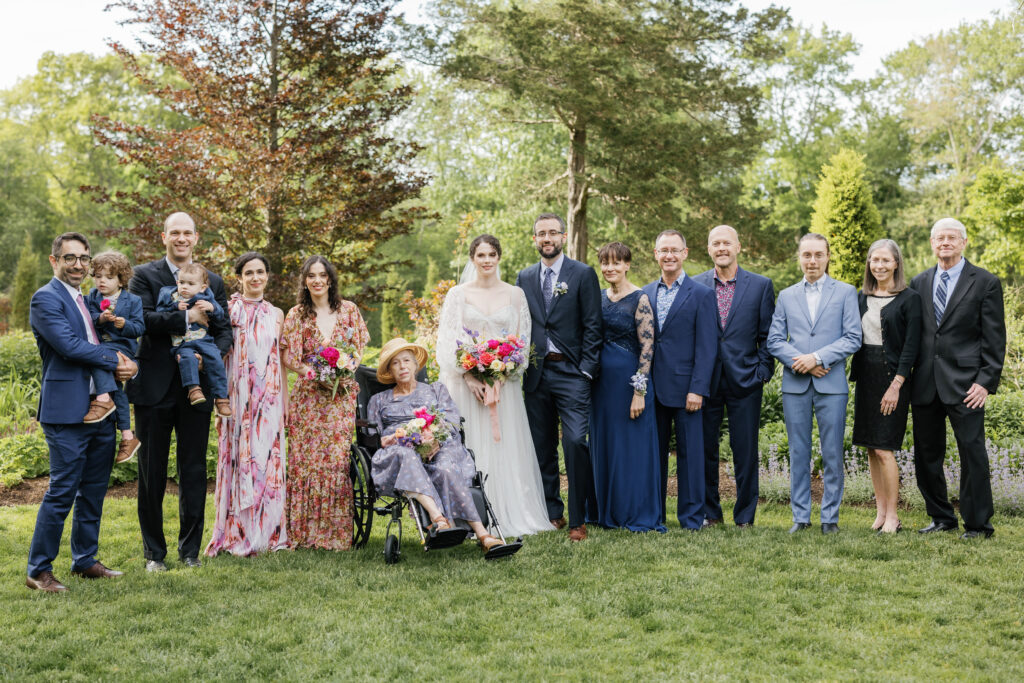

Start the Day Early!
My very last time tip is to consider starting your day early. This can provide a lot of extra time to manage activities scheduled pre-ceremony, like any other photos, and get ready with hair and makeup.
This not only helps to avoid feeling rushed but can also allow for any unexpected delays or last-minute adjustments without compromising the integrity of your timeline. By beginning the day with extra time, you can have a much more relaxed morning, soaking in the excitement of the day without pressure.
Final Thoughts: Day of Wedding Timeline
Creating the perfect wedding timeline is all about balance and time. It ensures that your day flows smoothly while also leaving room for spontaneous and candid moments. Always remember that a successful wedding timeline really does lie in flexibility. Always be ready to adapt and embrace the unexpected as needed.
If you’re still looking for a wedding photographer to capture your day, I’d love for you to get in touch.
Check out these posts next: